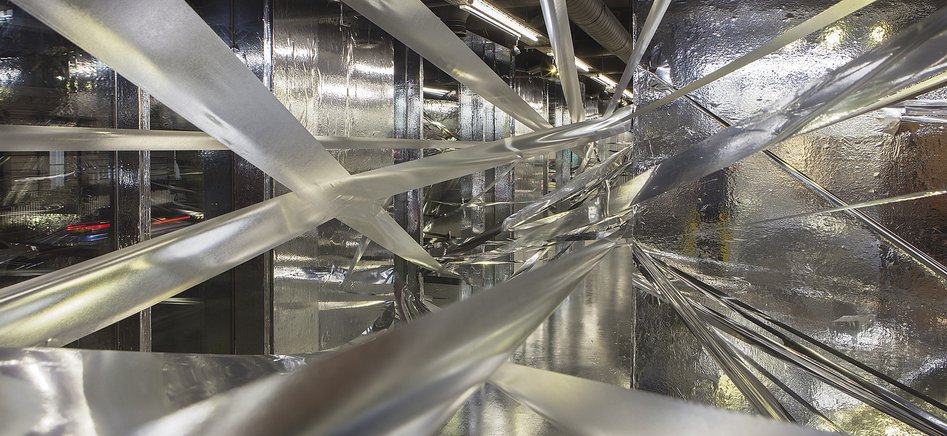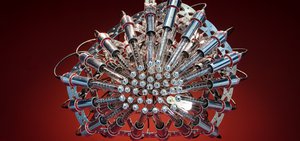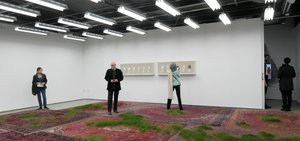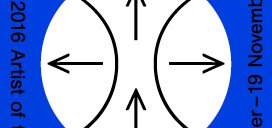2014 Artist of the Year: Lee Bul

Ikon presents the first UK solo show of works by Korean artist Lee Bul. The judicious
survey of early drawings, studies, sculptural pieces and ambitious installations –
including a new commission made for Ikon – showcases the visually compelling and
intellectually sharp works which have established Lee Bul as one of the most important
artists of her generation.
In conjunction with Ikon’s exhibition, Korean Cultural Centre UK (KCCUK) in London
presents a large-scale ambitious architectural installation entitled Diluvium (12
September – 1 November 2014) alongside accompanying scale models, maquettes and
drawings. Lee Bul has created a new version of the work designed specifically for the
exhibition space of KCCUK made frommirror-effect vinyl and plywood on steel frame.
Born in 1964, under the military dictatorship of South Korea, Lee Bul graduated in
sculpture from Hongik University during the late 1980s. Her works became preoccupied
with politics in the broadest sense, delving into many variants of the all-too-human, and
thus fallible, forms of idealism that permeate culture and civilization. From the
beginning, she took an iconoclastic path, creating works that crossed genres and
disciplines in provocative ways. Early street performance-based works saw Lee Bul
wearing full-body soft sculptures which were simultaneously alluring and grotesque. Her
later female Cyborg sculptures of the 1990s drew upon elements from art history, critical
theory, science fiction, and the popular imagination to explore anxieties of dysfunctional
technological advances, whilst simultaneously harking back to icons of classical
sculpture.
Lee Bul’s more recent works have similarly dual concerns; at once forward-looking yet
retrospective, seductive but suggestive of ruin. Sculptures suspended like chandeliers,
elaborate assemblages that glimmer with crystal beads and chains and mirrors,
poignantly evoke castles in the air. The sculptures reflect utopian architectural schemes
of the early 20th century as well as architectural images of totalitarianism from Lee Bul’s
experiences of military Korea.
Perhaps the most explicit of these works is Mon grand récit: Weep into stones… (2005),
with its mountainous topography reminiscent of skyscrapers described by Hugh Ferriss
in his book The Metropolis of Tomorrow (1929). A nearby transmission tower broadcasts
a flashing LED message from Thomas Browne’s Hydriotaphia (1658): “weep into stones /
fables like snow / our few evil days.” Scaffolding supports several scale model
structures: a looping highway made of bent plywood, a tiny Tatlin's Monument, a
modernist staircase that features in Fellini's La Dolce Vita, and an upturned cross-section
of the Hagia Sofia.
Alongside these seminal works a new commission, made possible through the Art Fund
International scheme in collaboration with BirminghamMuseumand Art Gallery and New
Art Gallery Walsall, will be unveiled at Ikon. After Bruno Taut (Devotion to Drift) will make
explicit reference to the architect Bruno Taut (1880 –1938), a great influence on Lee Bul’s
works. The suspended sculpture, dripping with an excess of crystalline shapes and glass
beads, will reference the exponential growth and unsustainability of the modern world.
Contrary to Taut’s early 20th century optimism, Lee Bul conjures up beautiful dreams that
she knows won’t come true, exploring what she sees as the failings of utopian optimism.
The exhibition will be accompanied by a major publication, produced in collaboration
with Artsonje Center, Seoul; MUDAM – Musée d’Art Moderne Grand-Duc Jean,
Luxembourg; EACC, Castellon; and Korean Cultural Centre UK. This exhibition is
organised in collaboration with the Korean Cultural Centre UK, EACC Castellón and
Musée d'art moderne et contemporain Saint-Étienne Métropole and supported by the
Korea Foundation, Lehmann Maupin, Galerie Thaddeaus Ropac and PKM Gallery.




